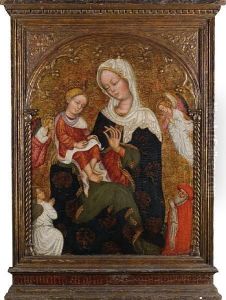Jean, Giovanni Charlier Di Francia Paintings
Jean, Giovanni Charlier Di Francia, better known as Blessed Hannibal Mary Di Francia, was not primarily an artist but a Roman Catholic priest and religious founder. He was born on July 5, 1858, in Messina, Sicily, Italy, into a noble family. His life was dedicated largely to religious and charitable works, rather than the creation of art. However, his influence and work were significant in the context of Catholicism and the support of the poor and orphans, which has been depicted through various art forms posthumously.
From an early age, Di Francia was drawn to religious life and the plight of the less fortunate. After completing his studies in theology and philosophy, he was ordained a priest in 1878. Di Francia witnessed the extreme poverty and suffering of the orphans and the abandoned in the streets of Messina, which deeply affected him. This led to his lifelong mission of serving the poor and promoting Eucharistic adoration and devotion.
In 1887, he opened the first orphanage and took in many children to provide them with shelter, education, and care. This was the beginning of his founding of the religious congregations, the Daughters of Divine Zeal and the Rogationists of the Heart of Jesus. These congregations were dedicated to caring for orphans and the poor, as well as promoting prayers for vocations in the Catholic Church, which he believed was a critical need of the time.
Di Francia was also a prolific writer, having written numerous spiritual books, letters, and essays. His works emphasized the importance of prayer, especially for vocations, and he advocated for the continuous adoration of the Eucharist. Through his writings and the congregations he founded, Di Francia's influence extended well beyond his lifetime.
Di Francia's death came on June 1, 1913, after a life full of service. He was beatified by Pope John Paul II on October 7, 1990. While Di Francia may not be remembered through visual arts or paintings, his legacy as a spiritual leader and advocate for the poor continues to be celebrated within the Catholic Church. His life and works have inspired many and are commemorated through various forms of religious art and iconography.
